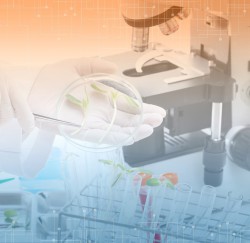Research and Development Tax Credit
The Research & Development ("R&D") tax credit is a federal and state income tax credit designed to encourage research and
development activities for companies to invest in new or improved product or process development.
In general, the R&D tax credit allows companies to claim up to 20 percent of qualified research expenses (15 percent for California).
The credit is a dollar-for-dollar reduction of federal and state taxes and therefore, improves cash flow.
Common industries that qualify for the R&D tax credit include, but are not limited to:
- Aerospace & Defense
- Architecture & Construction
- Automobile
- Chemical & Formula
- Engineering
- Food Science
- Foundries
- Machining
- Manufacturing & Fabrication
- Pharmaceutical
- Software Development
- Tool & Die Casting
R&D activities can include the following:
- Manufacturing products
- Developing new, improved or more reliable products
- Developing or applying for patents
- Performing certification testing
- Developing new technology
- Performing environmental testing
- Adding new equipment
- Developing software or hardware
- Improving/building/designing buildings
- Developing/improving production manufacturing process
- Conducting testing of new concepts and technology OR
- Hiring outside contractors
Four Criteria
- Permitted Purpose
Intended to create or improve a product, process, or software
- Technical in Nature
Relies on engineering, biology, physics, or computer science
- Process of Experimentation
Process to eliminate uncertainties (testing or evaluating alternatives, trial and error, etc.)
- Uncertainty
In capability, method, design, process, or cost
R&D Case Study
Case 1
The following is a case study of an actual company in the manufacturing industry.
- Wages subject to income tax withholding paid to employees to perform qualified activities
- 65% of amounts paid to non-employees to perform qualified activities
- Supplies (non-depreciable property) used to build prototypes and other tangible items used in the development process
Study Highlights
- Qualified Wages: $199,744
- Qualified Supplies: $8,668
- Qualified Contract Research: $33,092
- Total Qualified Research Expenses: $241,504
- Total R&D Credit Amount: $42,263
Case 2
The following is a case study of an actual company in the software industry.
- Wages subject to income tax withholding paid to employees to perform qualified activities
Study Highlights
- Qualified Wages: $811,546
- Total Qualified Research Expenses: $811,546
- Total R&D Credit Amount: $142,021
Case 3
The following is a case study of an actual company in the high technology industry.
- Wages subject to income tax withholding paid to employees to perform qualified activities
- 65% of amounts paid to non-employees to perform qualified activities
- Supplies (non-depreciable property) used to build prototypes and other tangible items used in the development process
Study Highlights
- Qualified Wages: $1,169,023
- Qualified Supplies: $480,626
- Qualified Contract Research: $626,078
- Total Qualified Research Expenses: $2,275,727
- Total R&D Credit Amount: $398,253
Update
What's new from "Tax Extender" bill?
The Protecting Americans from Tax Hikes (PATH) Act of 2015 was approved and signed by the President on December 18, 2015 with some key changes:
- R&D Tax Credit was made permanent.
- Additionally beginning in 2016, eligible small business ($5 million or less in gross receipts) may elect to use the credit against their payroll tax (i.e., FICA) liability.
- Eligible medium sized businesses ($50 million or less in gross receipts) may claim the credit against their alternative minimum tax (AMT) liability.


